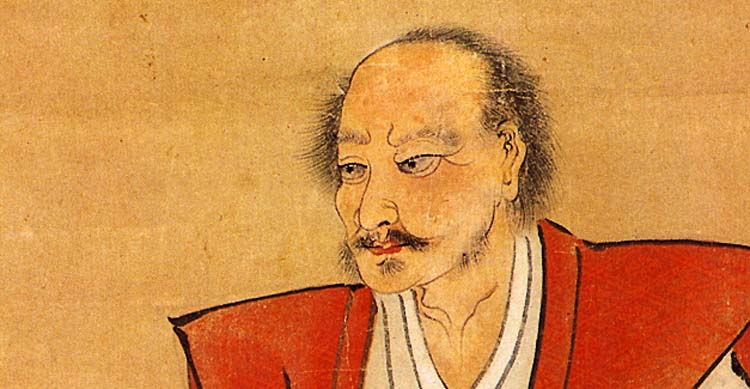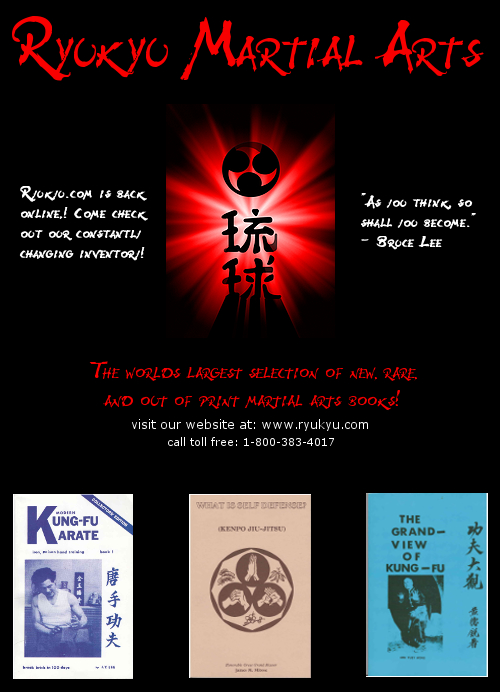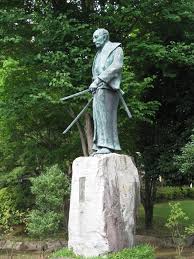Miyamoto Musashi 1584 – 1645

Miyamoto Musashi 1584 – 1645
 Shinmen Musashi No Kami Fujiwara No
Genshin, commonly known as Miyamoto Musashi was a ronin samurai, and an expert Japanese swordsman. Musashi became renowned through stories of his excellent
swordsmanship in numerous duels, even from a very young age. He was often
referred to as Kensei, or sword saint. He
was the founder of the Hyōhō Niten Ichi-ryū or Niten-ryū style of swordsmanship and the
author of The Book of Five Rings or Go Rin No Sho, written during 1643-1645, a book on
strategy, tactics, and the philosophy of the way of the warrior, considered a
masterpiece and still studied today.
Although an accomplished artist, sculptor, calligrapher, and teacher,
with skills in architectural design, his only writings are those related to
strategy and technique, including The Way of Resilience, 21 Precepts of self
Discipline to guide future generations.
Shinmen Musashi No Kami Fujiwara No
Genshin, commonly known as Miyamoto Musashi was a ronin samurai, and an expert Japanese swordsman. Musashi became renowned through stories of his excellent
swordsmanship in numerous duels, even from a very young age. He was often
referred to as Kensei, or sword saint. He
was the founder of the Hyōhō Niten Ichi-ryū or Niten-ryū style of swordsmanship and the
author of The Book of Five Rings or Go Rin No Sho, written during 1643-1645, a book on
strategy, tactics, and the philosophy of the way of the warrior, considered a
masterpiece and still studied today.
Although an accomplished artist, sculptor, calligrapher, and teacher,
with skills in architectural design, his only writings are those related to
strategy and technique, including The Way of Resilience, 21 Precepts of self
Discipline to guide future generations.
 Musashi was born in Harima Province, Japan. His father Shinmen Munisai was an
accomplished martial artist and master of the sword and jutte. When he was seven, Musashi was raised by his
uncle Dorinbo in Shoreian temple, who taught him the sword, and educated him in
Buddhism and the skills of writing and reading. At age 13, he killed his first
foe, Arima Kihei; at 16 he defeated opponent Aikyama in a duel; and at the age
of 21 he went to Kyoto and fought duels with several sword adepts from famous
schools, including the well-known battle with the Yoshioka School, in which he was
victorious. He was noted for his skill
at handling two swords at once, his Kenjutsu technique. He also employed a simple bamboo sword, which
he used to deadly effect.
Musashi was born in Harima Province, Japan. His father Shinmen Munisai was an
accomplished martial artist and master of the sword and jutte. When he was seven, Musashi was raised by his
uncle Dorinbo in Shoreian temple, who taught him the sword, and educated him in
Buddhism and the skills of writing and reading. At age 13, he killed his first
foe, Arima Kihei; at 16 he defeated opponent Aikyama in a duel; and at the age
of 21 he went to Kyoto and fought duels with several sword adepts from famous
schools, including the well-known battle with the Yoshioka School, in which he was
victorious. He was noted for his skill
at handling two swords at once, his Kenjutsu technique. He also employed a simple bamboo sword, which
he used to deadly effect.
From 1605 to 1612, he travelled extensively all over Japan in musha shugyō, a warrior pilgrimage during which he honed his skills with duels. He was said to have used bokken or bokuto in actual duels. In most duels, it is known that Musashi did not care which weapon, real sword or wooden sword, his foe used--such was his mastery. He fought over 60 duels without defeat, likely a

conservative estimate which did not account for deaths by his hand in major battles, and six major wars. During this time he was mostly Ronin, a masterless Samurai, choosing to live apart from society in order to master his art. His most famous duel occurred in 1612 in Oguro, Brunzen province, when he defeated several sword-armed opponents, including spearman Inei (chief priest of the Hozo-in) and Saki Kojiro, with a weapon made from a boat oar he used. In later years he stopped using real swords in duels, and his focus shifted to teaching and ink paintings.
Musashi perfected the two-sword kenjutsu technique he called niten’ichi (two heavens as one) or nito’ichi (two swords as one), in which the swordsman uses both katana and wakizashi at the same time. He reportedly was able to do this due to his unusually large size. Most of his contemporaries held the katana with both hands. Musashi had no formal training in kenjutsu, aside from dueling with their representatives. He is reputed to have had a no-nonsense approach to fighting with no additional frills or aesthetic considerations, due to his real-life combat experience.
In 1641, Musashi wrote The Hyoho
Sanju Go ("Thirty-five Instructions on Strategy") for Hosokawa
Tadatoshi; this work overlapped and formed the basis for the later Go Rin No
Sho. In 1643 he retired to a Reigando cave as a hermit to write The Book of
Five Rings, finishing it in February, 1645.
In May Musashi bequeathed his worldly possessions, after  giving his
manuscript copy of the Go Rin No Sho to the younger brother of Terao Magonojo,
his closest disciple. He died in Reigandō cave.
giving his
manuscript copy of the Go Rin No Sho to the younger brother of Terao Magonojo,
his closest disciple. He died in Reigandō cave.
 At the moment of death, he had
himself raised up, his belt tightened and his wakizashi put in it. He seated
himself with one knee vertically raised, holding the sword with his left hand
and a cane in his right. He died in this posture. His body, buried in full
armour, faced the direction the Hosokawas would travel to Edo. His hair was buried on Mount Iwato, and his grave
located east of the Reigando cave, with the grave-marker in present-day
Kumamoto Prefecture.
At the moment of death, he had
himself raised up, his belt tightened and his wakizashi put in it. He seated
himself with one knee vertically raised, holding the sword with his left hand
and a cane in his right. He died in this posture. His body, buried in full
armour, faced the direction the Hosokawas would travel to Edo. His hair was buried on Mount Iwato, and his grave
located east of the Reigando cave, with the grave-marker in present-day
Kumamoto Prefecture.
Much of Musashi’s past is shrouded in mystery and legend. His writings were very ambiguous, perhaps purposely, and translating into English made them even more so, hence the different translations of Go Rin No Sho. His legacy is found in his life, his profound teachings, his mastery of the swords, and the code of the warrior samurai.
